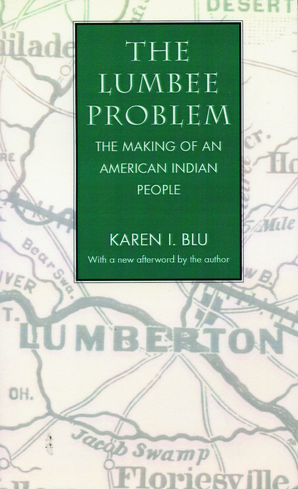The Lumbee Problem: The Making of an American Indian PeoplePosted in Anthropology, Books, History, Media Archive, Monographs, Native Americans/First Nation, United States on 2013-08-24 23:09Z by Steven |
The Lumbee Problem: The Making of an American Indian People
University of Nebraska Press
2001 (Originally published in 1980)
298 pages
Illus., maps
Paperback ISBN: 978-0-8032-6197-6
Karen I. Blu, Emeritus Associate Professor of Anthropology
New York University
How does a group of people who have American Indian ancestry but no records of treaties, reservations, Native language, or peculiarly “Indian” customs come to be accepted—socially and legally—as Indians? Originally published in 1980, The Lumbee Problem traces the political and legal history of the Lumbee Indians of Robeson County, North Carolina, arguing that Lumbee political activities have been powerfully affected by the interplay between their own and others’ conceptions of who they are. The book offers insights into the workings of racial ideology and practice in both the past and the present South—and particularly into the nature of Indianness as it is widely experienced among non-reservation Southeastern Indians. Race and ethnicity, as concepts and as elements guiding action, are seen to be at the heart of the matter. By exploring these issues and their implications as they are worked out in the United States, Blu brings much-needed clarity to the question of how such concepts are—or should be—applied across real and perceived cultural borders.
